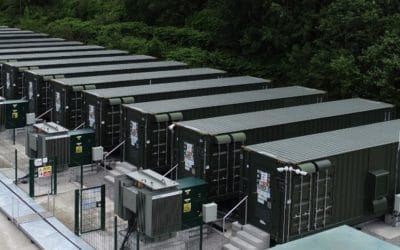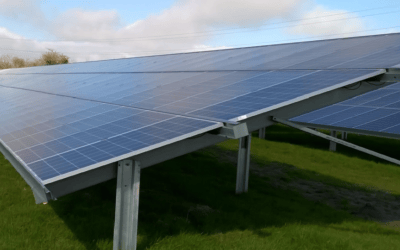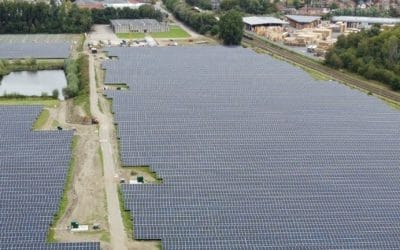Business and industry accounts for approximately 25% of the UK’s carbon emissions and this has led the government to introduce a range of policies and levies. Among such legislation, is the Minimum Energy Efficiency Standard (MEES), Energy Performance Contracts, Carbon Change Levy, Carbon Reduction Commitment, and The Energy Saving Opportunities Scheme (ESOS).
What is ESOS?
ESOS is a mandatory carbon reporting programme. It was launched by the government in July 2014 in response to Article 8 of the European Commission’s Energy Efficiency Directive (EED), which requires all EU member states to introduce a programme of regular energy audits for large organisations and their corporate groups. As well as assessing energy use and carbon emissions, ESOS requires firms to identify ways in which energy savings could be made – although, as yet, no legal requirement is made of firms to take act on the information.
The government has calculated that if businesses covered by ESOS were to reduce their energy use by just 0.7 per cent, they could save around £250m each year.
Who does ESOS apply to?
ESOS applies to all UK businesses that employ at least 250 people, or have an annual turnover above £38.9m and an annual balance sheet total above £33.4m. Around 9,000 large organisations are estimated to qualify under the scheme and while it mainly affects businesses, other large not-for-profit and non-public sector organisations also meet the criteria.
What does ESOS involve?
All qualifying organisations are subject to key carbon reporting obligations and must carry out ESOS assessments every four years. These assessments are comprehensive audits of the energy used by their buildings, industrial processes and transport. Part of the process involves identifying areas where savings could be made through the implementation of cost-effective energy saving measures. Any business that meets the criteria on the qualification date (the next one being 31 December 2018) must submit their ESOS assessment before the compliance deadline, 5 December 2019.
What is the penalty for non-compliance?
Businesses which fail to meet their reporting obligations face substantial financial penalties, ranging from £5,000 up to £90,000. Fines can be given for everything from failing to undertake an audit or to notify the Environment Agency, to failing to maintain records or providing misleading information.
How does an ISO 50001 energy management system fit in?
For businesses which have an ISO 50001 energy management system that’s certified by an accredited certification body and covers all energy use (for the whole corporate group in the UK), this will count as their ESOS assessment. As long as the certification remains valid at the compliance date and the Energy Management System covers all the assets held and activities carried on by the organisation. If there isn’t an ISO 50001 energy management system in place, or it doesn’t cover everything, then an ESOS assessment must be carried out.
What must an ESOS assessment cover?
- Energy use – The assessment must measure the total energy consumption of the organisation for a continuous 12-month period.
- Energy saving measures – It must include an energy audit to identify areas of significant energy consumption and energy saving measures which could be introduced.
- Lead Assessor – A lead assessor must be appointed to oversee the process and its delivery. They can be an employee or an external consultant but need to be a member of an approved professional body register.
- Notify EA about compliance – Once the report has been completed and signed off by the lead assessor and a board member/s, notification must then be given to the Environment Agency.
- Meeting deadlines – All reporting and notifications must be completed ahead of the specified deadline.
How to use your ESOS assessment to make improvements
When it comes to making energy savings, large businesses complying with ESOS will already have done the hard part. The key data needed to implement changes will have been pulled together. The next step is to use the information to your advantage.
Here is a step-by-step guide to saving energy when you’re a commercial enterprise:
Step 1 – Understand current energy use
The process should begin with a clear understanding of where and how energy is currently being used across the whole organisation.
Step 2 – Identifying areas where improvements can be made
The next step is to identify those areas where energy efficiency measures and upgrades could be implement for the greatest benefit and savings. For example, commercial solar PV panels, energy efficient lighting schemes or renewable heat technologies. This should include assessing the feasibility of different upgrades and estimated payback periods.
Step 3 – Work with an experienced contractor
If you haven’t already done so, then it is advisable to call on the services of an experienced energy efficiency contractor. Ideally, this will be someone with expertise and a strong track record in delivering the full range of renewable energy technologies, not just a company specialising in one distinct area, such as a solar company.
For example, here at Anesco we support businesses of all sizes and industries to reduce their energy costs and emissions. Our award-winning team is knowledgeable about all types of energy efficiency measures, and importantly knows how to combine them for the greatest benefit. We also have strong commercial awareness, which is vital for ensuring the smooth delivery of any project.
Step 4 – Decide on a funding route
There will be several funding options for taking your project forward, from the self-funded route to fully-funded solutions that require little upfront capital. There may also be incentives available, depending on the technologies involved. Again, at Anesco we will advise our customers on all their options, to enable them to make the best choice for their individual circumstances.
Step 5 – Undertake the improvements
Finally, a schedule of works will then be produced and the upgrades themselves delivered. Don’t forget, employee behaviour can often be a factor in how effective certain new measures go on to be, so plans should also be put in place for training and awareness, to drive company-wide engagement.
Measures and their typical savings
The individual measures that are implemented will vary from work place to work place, but here is an example of the typical savings that may be achieved:
Lighting
- The installation of energy efficient light fittings and intelligent lighting control systems
- Potential cost saving: Up to 30%
- Retrofit available – Yes
Business solar panels
- Rooftop or ground mount solar power for businesses – this type of installation generates electricity for use ‘behind the meter’, meaning it can reduce the amount of energy that needs to be purchased from the grid. Commercial solar systems can also generate additional revenue streams for a business, especially when used in conjunction with energy storage technologies
- Potential cost saving: Up to 75%
- Retrofit available – Yes
Energy storage unit
- Capturing electrical energy from the grid, or a renewable source, and releasing it when needed to provide grid stability in return for receiving an income from National Grid.
- Potential cost saving: Up to 30%
- Retrofit available: Yes
Biomass boilers
- A cost-effective, low carbon alternative to an oil/fossil fuelled boiler
- Potential cost savings: Up to 50-70%
- Retrofit available – Yes
Renewable Heat
- A heat pump takes the available low grade heat from the ground, air or water surrounding a property and increases it to a more useful temperature for use in the building
- Potential cost saving: Up to 30%
- Retrofit available: Possible
Combined heat and power (CHP) system
- A gas or oil fuelled engine that simultaneously generations electricity and useful heating and/or cooling. Typically generated locally at the point of use.
- Potential cost saving: Up to 20%
- Retrofit available: Possible
Destratification
- A ventilation system that re-circulates the warm or cool air generated by your existing heating or air-conditioning systems, making sure it is evenly distributed from ceiling to floor, or from floor to ceiling.
- Potential cost saving: Up to 50%
- Retrofit available: Yes
Voltage optimisation
- Used to regulate, clean and condition the incoming power supply, in order to reduce the voltage supplied to the optimum level for the on-site electrical equipment and appliances
- Potential cost saving: Up to 40%
- Retrofit available: Yes
Building Management System
- Installing or fine tuning an intelligent self-learning Building Management System to monitor and control a building’s mechanical and electrical systems to ensure the building environment is controlled to the optimum condition with the minimum use of energy.
- Potential cost saving: At least 15%
- Retrofit available: Yes
One often overlooked benefit of making upgrades of this nature is the reduction they can bring in ongoing maintenance costs. The impact of the changes may also be felt immediately, bringing both short term and long term benefits.
In summary
The key thing to remember about ESOS is that you’re already putting the time and hard work in to producing the assessment. Make the most of that by using the information you collate to go on and make tangible savings. Even a 5% reduction will be financially very significant. ESOS is more than a red tape exercise, it is an opportunity to reduce overheads, streamline operations and produce valuable data for both shareholders and any refinancing bids. By making smarter energy decisions and being committed to sustainability you will maximise your potential returns.
You may also be interested in:
Anesco is the UK’s leading energy efficiency company and works with businesses of all sizes and across all industries. For specialist advice and information on reducing commercial carbon emissions and improving energy efficiency, contact the Anesco Commercial & Industrial team for an informal chat on 0845 894 44 44.






